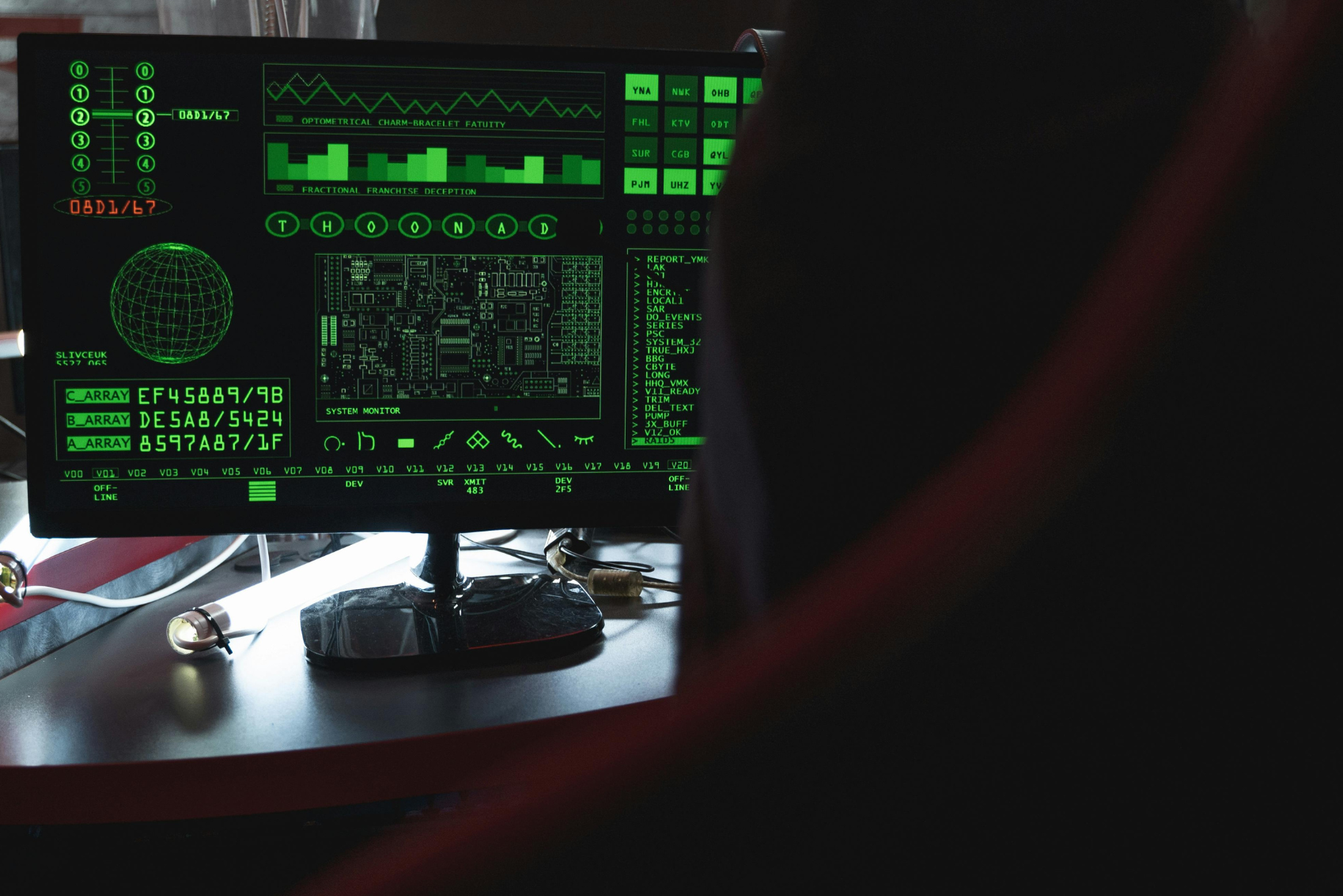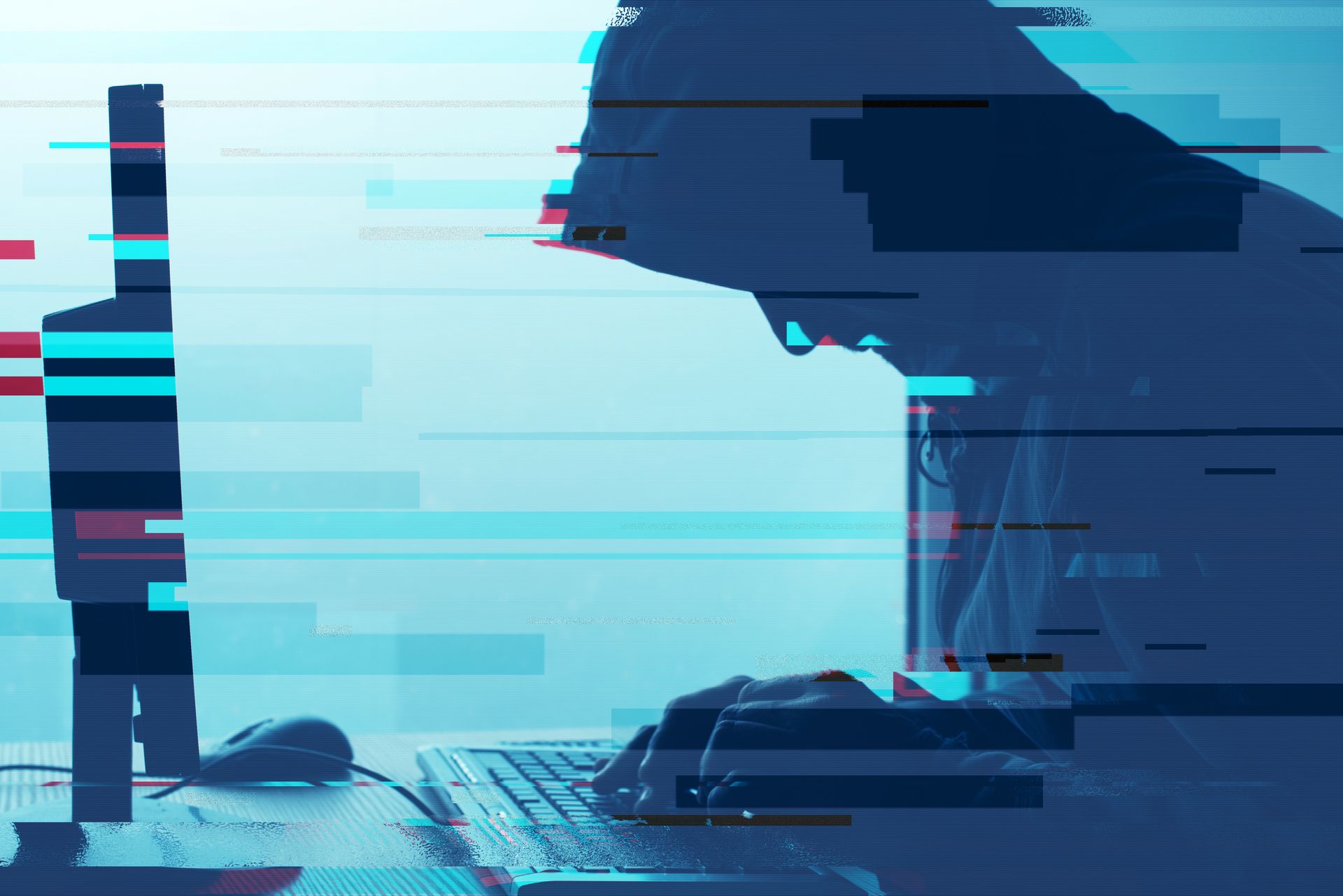Safetech Blog
Staying ahead of cyber threats and emerging security challenges is paramount for cybersecurity professionals. This blog has become a trusted and essential source of information for cybersecurity experts and enthusiasts alike. In this section, we will explore why it is so beneficial for cyber security professionals to read the Safetech Blog.

By Anca Stancu
•
September 18, 2025
The rise of cyber threats and sophisticated hacking techniques makes traditional password protection inadequate. One of the most powerful tools to enhance security is Multi-Factor Authentication (MFA), a method that requires users to provide more than just a password to verify their identity. MFA is no longer a nice-to-have feature but an essential layer of protection. In this post, we’ll explore seven crucial reasons why MFA is vital for your security, how it works, and why it’s becoming the standard for keeping cybercriminals at bay.

September 26, 2024
Penetration Testing If you're eyeing a career in this high-stakes field, becoming a CREST Certified Penetration Tester is a prestigious milestone that can set you apart. This journey involves understanding the essential prerequisites, selecting the right training materials, crafting a balanced study plan, gaining hands-on experience, and acing the CREST exam. Once certified, the opportunities are vast, from advancing your career to joining elite professional networks. Ready to dive in? Let's explore how you can achieve this coveted certification and make your mark in the cybersecurity world.

September 4, 2024
Introduction The rise of digital finance has brought unparalleled convenience to consumers and businesses alike. However, as the fintech industry expands, so does the landscape of cyber threats. The dark web, a hidden part of the internet where illegal activities thrive, poses a significant risk to fintech companies. Understanding how to navigate this treacherous terrain is crucial for fintech businesses to protect sensitive information and maintain customer trust. This blog post explores the dangers lurking on the dark web, the specific threats targeting fintech, and actionable strategies fintech companies can employ to safeguard against these cyber threats. The Dark Web: A Brief Overview The dark web is a small portion of the deep web that is intentionally hidden and inaccessible through standard web browsers. It requires special software, such as Tor (The Onion Router), to access. While the deep web includes benign content like private databases and academic resources, the dark web is notorious for its association with illegal activities, including drug trafficking, illegal weapons sales, and, alarmingly for fintech companies, cybercrime. Statistics and Facts: • According to a report by the University of Surrey, over 60% of the listings on the dark web could harm enterprises. • In 2020, cybercrime cost the global economy an estimated $1 trillion, with the fintech sector being a primary target due to the sensitive financial data it handles. Why the Dark Web is a Threat to Fintech Companies Fintech companies, which offer digital banking, peer-to-peer payments, and other online financial services, are prime targets for cybercriminals. The dark web acts as a marketplace where cybercriminals can buy and sell stolen data, including personal identification information (PII), credit card details, and corporate data. Key Threats Include: 1. Data Breaches and Leaks: Fintech firms are often targeted for the wealth of personal and financial data they hold. This data can be sold on the dark web, leading to identity theft and financial fraud. 2. Ransomware: Cybercriminals use ransomware to encrypt a company’s data and demand a ransom for its release. The dark web facilitates these transactions anonymously, making it difficult for authorities to trace. 3. Phishing Kits and Credentials: Dark web forums sell phishing kits and credentials that can be used to impersonate fintech companies. These tools enable criminals to trick customers into providing sensitive information. 4. Malware and Exploits: Dark web markets offer malware and exploits that target specific fintech software vulnerabilities, allowing criminals to gain unauthorised access to systems. Notable Dark Web Incidents Affecting Fintech Several high-profile incidents have underscored the vulnerability of fintech companies to dark web threats: 1. Capital One Data Breach (2019): A hacker accessed over 100 million Capital One customer accounts and credit card applications. The stolen data was reportedly found on a dark web forum. 2. Robinhood Phishing Attack (2021): A phishing scam targeted users of the Robinhood trading platform, stealing their login credentials. The stolen credentials were then sold on the dark web. 3. Cash App Fraud (2020): Fraudsters exploited Cash App’s referral bonus program using stolen identities and sold the illegally obtained funds on dark web marketplaces. How Fintech Companies Can Protect Against Dark Web Threats To mitigate the risks posed by the dark web, fintech companies must adopt a proactive and multi-layered approach to cybersecurity. 1. Dark Web Monitoring One of the most effective ways to protect against dark web threats is through dark web monitoring. This involves using specialised tools to scan dark web forums, marketplaces, and other platforms for mentions of the company’s data or brand. What Are The Benefits of Dark Web Monitoring? Early Threat Detection: By identifying stolen data or mentions of the company early, fintech firms can respond before the information is widely distributed. Incident Response Preparedness: Dark web monitoring can provide valuable intelligence that helps companies prepare for potential security incidents. Brand Protection: Monitoring for unauthorised use of the company’s brand or products can prevent phishing attacks and other forms of impersonation. 2. Implementing Strong Data Encryption Data encryption is crucial for protecting sensitive information. Fintech companies should ensure that all data, both in transit and at rest, is encrypted using robust encryption standards. Best Practices: End-to-End Encryption: Encrypting data from the moment it is created until it reaches the intended recipient prevents unauthorised access. Regular Encryption Updates: Encryption algorithms should be regularly updated to protect against evolving threats. 3. Multi-Factor Authentication (MFA) Multi-factor authentication adds an extra layer of security by requiring users to provide multiple forms of verification before accessing accounts. This reduces the risk of unauthorised access, even if credentials are compromised. MFA Implementation Tips: Use Diverse Authentication Factors: Combining something the user knows (password), something they have (smartphone), and something they are (fingerprint) strengthens security. Encourage Customer Adoption: Educate customers about the importance of MFA and encourage them to enable it on their accounts. 4. Regular Security Audits and Penetration Testing Regular security audits and penetration testing help identify vulnerabilities in a company’s systems before cybercriminals can exploit them. Key Focus Areas for Audits: Network Security: Assess the strength of firewalls, intrusion detection systems, and other network security measures. Application Security: Test the security of fintech applications for common vulnerabilities such as SQL injection, cross-site scripting (XSS), and buffer overflows. Employee Training: Evaluate the effectiveness of cybersecurity training programs to ensure employees are aware of phishing, social engineering, and other common threats. 5. Employee Education and Training Employees are often the first line of defence against cyber threats. Comprehensive training programs can help employees recognise and respond to potential security risks. Training Topics to Cover: Phishing Awareness: Educate employees on how to identify phishing emails and avoid clicking on suspicious links. Data Handling Protocols: Teach employees proper procedures for handling sensitive information Incident Reporting: Ensure employees know how to report suspected security incidents promptly. 6. Collaboration with Cybersecurity Firms Partnering with cybersecurity firms can provide fintech companies with access to specialised expertise and resources. Benefits of Cybersecurity Partnerships: Access to Advanced Tools: Cybersecurity firms offer tools and technologies that can detect and respond to threats more effectively than in-house teams alone. Incident Response Support: In the event of a breach, cybersecurity firms can assist with containment, investigation, and recovery efforts. Threat Intelligence Sharing: Collaborating with cybersecurity firms enables fintech companies to stay informed about the latest threats and vulnerabilities. Future Trends in Dark Web Threats and Fintech Security As technology evolves, so do the tactics of cybercriminals. Fintech companies must stay ahead of emerging threats to protect their customers and data. 1. AI-Powered Cyber Threats Artificial intelligence (AI) is increasingly being used by cybercriminals to automate attacks and develop sophisticated malware. Fintech companies need to invest in AI-driven security solutions to detect and respond to these threats. 2. Increased Targeting of Mobile Platforms With the growing popularity of mobile banking, mobile platforms are becoming prime targets for cyberattacks. Fintech companies must prioritise securing mobile apps and devices to protect customer data. 3. Blockchain and Cryptography Innovations Blockchain technology offers potential solutions for securing financial transactions and protecting against fraud. Fintech companies should explore the use of blockchain and advanced cryptographic techniques to enhance security. 4. Regulatory Changes and Compliance As governments introduce stricter regulations to protect consumer data, fintech companies must stay compliant with these regulations to avoid legal repercussions and protect customer trust. Key Regulations to Monitor: General Data Protection Regulation (GDPR): Affects companies operating in the European Union, requiring them to protect personal data and respect privacy rights. California Consumer Privacy Act (CCPA): Imposes data privacy requirements on companies doing business in California, including fintech firms. Payment Card Industry Data Security Standard (PCI DSS): A set of security standards designed to ensure that all companies that process, store, or transmit credit card information maintain a secure environment. Summary For Fintech's The dark web presents significant challenges for fintech companies, but these challenges can be effectively managed with the right strategies and tools. By adopting a proactive approach to cybersecurity, including dark web monitoring, data encryption, multi-factor authentication, regular security audits, employee training, and collaboration with cybersecurity experts, fintech companies can protect themselves against the ever-evolving landscape of cyber threats. Staying informed about emerging trends and regulatory changes will also help fintech companies maintain robust security measures and continue to earn the trust of their customers in a digital-first world. Fintech companies need to take cyber threats seriously. Protect your business and customers by implementing comprehensive security measures today. Contact us to learn how we can help you safeguard against dark web threats.

August 28, 2024
Think about power plants generating electricity, manufacturing facilities producing goods, and transportation systems moving people and products. These are all underpinned by OT systems. However, as these systems increasingly integrate with digital networks, they become prime targets for cyber threats. While many are familiar with IT security—guarding our data and information—OT security is about protecting these physical processes and infrastructures from being tampered with or shut down. The stakes are high. Imagine if a malicious actor could manipulate the operations of a city’s power grid or disrupt the automated systems in a water treatment plant. The consequences could be disastrous. A real-world example that brings this issue to light is the Colonial Pipeline ransomware attack in 2021. This incident didn’t just cause financial damage; it disrupted f uel supplies along the East Coast of the United States, leading to panic buying and shortages. It’s a clear signal that OT security breaches can have far-reaching effects on both businesses and the public.

August 15, 2024
What is Penetration Testing? Penetration testing, often referred to as pen testing, is a controlled, ethical hacking process designed to evaluate the security of systems, networks, and applications. It simulates potential cyberattacks to identify vulnerabilities before malicious actors can exploit them. The scope and objectives of a pen test vary depending on an organisation's needs, ranging from simple vulnerability assessments to complex red-teaming exercises. However, not all penetration testing services are created equal. The effectiveness of a pen test largely depends on the expertise and methodology of the provider. This is where CREST accreditation comes into play. What is CREST? CREST, which stands for the Council for Registered Ethical Security Testers, is an international non-profit accreditation body that sets high standards for cybersecurity service providers. CREST certification is recognised globally and is awarded to organisations and individuals who meet stringent criteria in technical competence, ethical conduct, and operational integrity. CREST’s rigorous certification process ensures that only the most capable and trustworthy organisations receive its accreditation. Companies must regularly undergo assessments to maintain their CREST status, ensuring they stay current with the latest developments in cybersecurity. Why Choose a CREST-Certified Pen Testing Provider? Choosing a CREST-certified provider offers several significant advantages: 1. Assurance of Expertise: CREST-certified organisations employ highly trained and experienced professionals. To become CREST-registered, penetration testers must pass rigorous exams and demonstrate substantial experience in the field, often accumulating thousands of hours of hands-on testing. 2. Compliance with Regulations: Many industries are subject to strict regulations regarding data security, such as GDPR, ISO 27001, and PCI DSS. A CREST-certified pen test helps organisations meet these regulatory requirements, providing assurance that their security measures are both robust and compliant. 3. Global Recognition: CREST accreditation is recognised worldwide, making it a valuable asset for organisations operating internationally. This global recognition ensures that your pen testing provider adheres to the highest standards, regardless of where your business operates. 4. Ongoing Professional Development: CREST-certified organisations are committed to continuous improvement. They stay updated on the latest cybersecurity threats and techniques, ensuring their services remain at the cutting edge of the industry. 5. Trusted Methodologies: The CREST penetration testing process follows established best practices, covering all aspects of the engagement from scoping and reconnaissance to reporting and data protection. This ensures a thorough and reliable assessment of your security posture. How Does CREST Certification Work? To achieve CREST certification, companies undergo a detailed assessment of their business processes, data security measures, and testing methodologies. This evaluation is not a one-time event but an ongoing commitment. CREST members must submit to annual reviews and complete a full reassessment every three years to maintain their certification. Additionally, CREST-certified companies must adhere to a strict code of conduct, which includes procedures for addressing any complaints or issues that may arise during an engagement. This commitment to ethical practices is a cornerstone of CREST accreditation, ensuring that certified providers act with integrity in all their interactions. Benefits of Using CREST-Accredited Services Opting for CREST-accredited penetration testing services offers peace of mind and tangible benefits: Expert-Driven Assessments: Your testing will be conducted by professionals who have proven their skills through CREST’s rigorous certification process. Enhanced Security Confidence: With CREST accreditation, you can trust that your pen testing provider adheres to the highest standards, reducing the risk of security breaches. Regulatory Compliance: CREST-certified tests can help demonstrate compliance with various regulatory frameworks, which is crucial for avoiding fines and maintaining customer trust. Competitive Advantage: Engaging a CREST-accredited provider can give you a competitive edge, particularly when bidding for contracts or working with clients who prioritise security. Why Safetech Innovations Recommends CREST-Certified Testing At Safetech Innovations, we understand the importance of rigorous security assessments in protecting your organisation from cyber threats. That’s why we recommend choosing a CREST-certified penetration testing provider. Their commitment to excellence and adherence to best practices ensures that your systems are thoroughly evaluated and vulnerabilities are effectively addressed. By opting for CREST-certified services, you are investing in the highest level of security assurance available, safeguarding your business against the ever-evolving threat landscape. In summary, CREST accreditation is a mark of quality in the cybersecurity industry, offering assurance that your penetration testing provider meets the highest standards of expertise, ethics, and professionalism. Whether you want to comply with regulatory requirements, enhance your security posture, or gain a competitive edge, CREST-certified pen testing services provide the comprehensive solutions you need. Safeguard your future with CREST-certified penetration testing—choose a provider that meets the gold standard in cybersecurity. Get in touch with us today .

August 14, 2024
While conventional antivirus (AV) solutions play a crucial role in identifying and blocking known threats, they may fall short when it comes to defending against advanced, zero-day attacks, ransomware, and complex phishing schemes. To ensure robust security, overlaying your existing antivirus with advanced protection is vital. This enhanced layer adds real-time threat detection, behavioural analysis, and machine learning capabilities that can identify and neutralise threats before they cause damage. Cybercriminals are constantly innovating, and your business cannot afford to rely on outdated defences. A multi-layered approach significantly increases your resilience against breaches, safeguarding sensitive data, protecting your business reputation, and ensuring compliance with industry regulations.

July 8, 2024
Why is email security so important in 2024? Email is one of the most popular attack vectors for cyber criminals, and this includes the use of sophisticated phishing attacks, malware, and spam, which has made securing email communications more important than ever. One key point to consider is how email exploitation impacts us financially. In 2023, phishing attacks accounted for 36% of all data breaches, a trend expected to continue into 2024. Ransomware attacks have also increased, with a business falling victim every 11 seconds. The financial repercussions of these breaches are substantial; the average data breach cost in 2023 was $4.35 million, while the average ransom payment was $1.85 million. The volume of Email Communication This number is projected to grow to 376 billion by 2025, highlighting the extensive reliance on email for formal correspondence in the business world. This means that this particular attack vector will continue to remain a popular choice with global cyber criminals. Regulatory Compliance Compliance with regulations such as the General Data Protection Regulation (GDPR) and the NIS2 Directive will continue to hold to account any businesses that do not adhere to their rigorous compliance requirements. Non-compliance can lead to fines of up to 4% of annual global turnover, making robust email security measures essential for businesses to avoid severe financial penalties. Human Error and Advanced Threats Human error is a leading cause of security breaches, with over 90% of cyber incidents traceable to some form of human error, often involving email. Cyber criminals also use advanced techniques like AI and machine learning to craft highly targeted and convincing phishing emails, increasing the difficulty of detecting these threats. What should I look out for? Email exploitation by cyber criminals can take various forms, with phishing, spear phishing, and email spoofing being some of the most prevalent techniques. Here are some clear examples of each: Phishing Example: 1. Subject: Your Account Has Been Suspended 2. Body:












